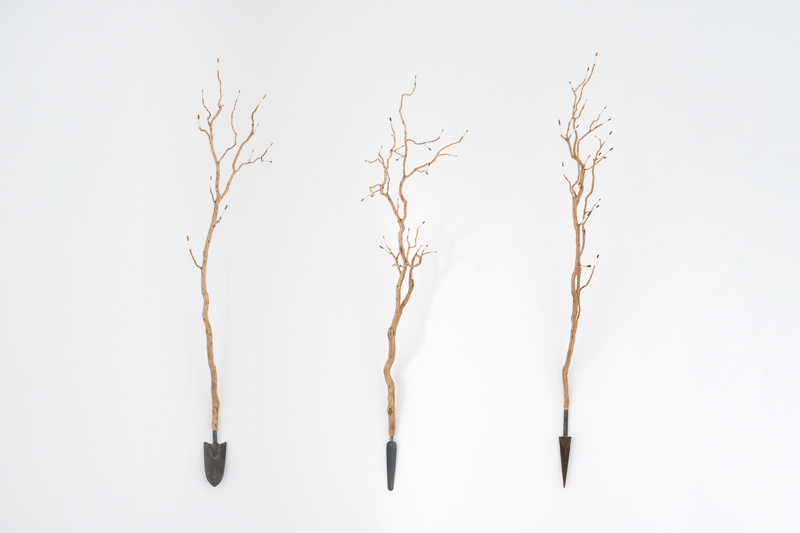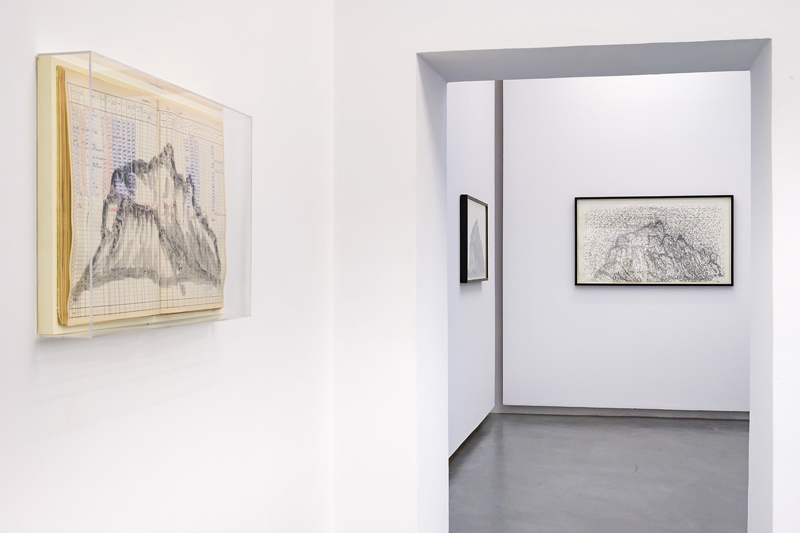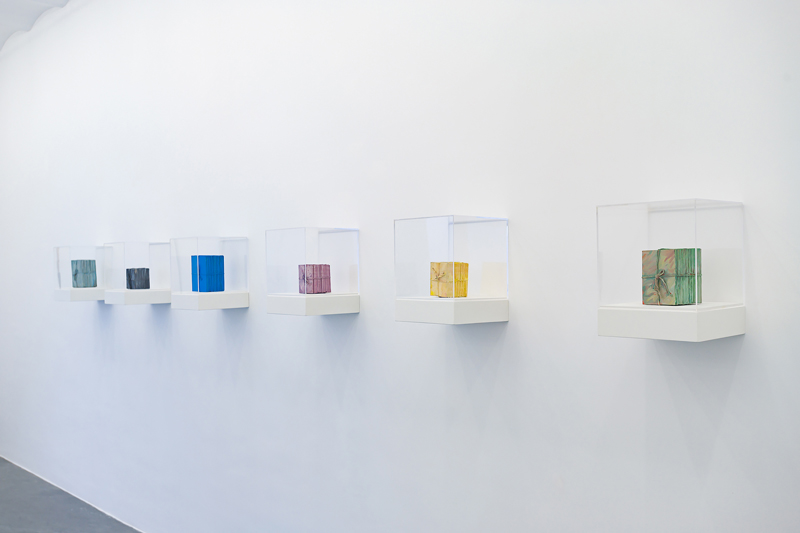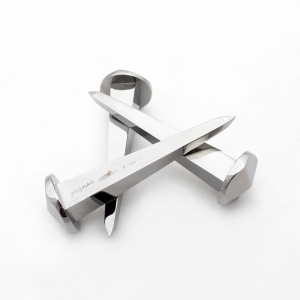
Yazid Oulab presents his new solo show “La flamme germe” at SELMA FERIANI Gallery in Tunisia.
Exhibition until 23 April 2022.
In conversation with Yazid Oulab
A pictorial connection to learning
Growing up in the arms of his grandmother, the first vision Yazid Oulab opened his eyes to were the Amazigh symbols inked onto her skin. She was the cave and cradle that introduced him to this image in his early years. Having grown up surrounded by lines, dots and their intersections, his relationship to learning was quite complex but strongly pictorial and imaginative. The image was built and anchored in his retina long before he went to art school, which he joined at the age of twenty-two. And what if letters were indeed drawings? An «A» could be a fish with a missing dot and the «B» is the unison of two rings and a line.
His path was by no means random, defined from his maternal cradle, to the elementary school where he perceived form and geometry, to the school where he learned to draw and paint full time. He gave himself the means to drive his learning well from Algeria, Paris and then Luminy in Marseille; a rather familiar context for a person who grew up in the countryside with an eye that carries very far.

Approaching the sphere, the cone and the cylinder
As soon as Oulab arrived in France, he began to question concepts, to reflect on the poetics of things, on their primary and figurative meaning. He was asked the question «how do you express yourself through a tree?». This was the starting
point of reflection upon where he comes from, his context and the beginning of everything. The answer holds genealogical roots that later become the foundation of his formal research.
Coming from a family that is both intellectual and working class, his upbringing joins together poetry and work. If he were to symbolize this with an image; then he has simply found the nail that brings writing and labor together. A link, an anchor and a fixture that allows him to hang on to the universal art history.
«What is interesting about the nail is that it draws from the history of art and the energy of creation. Cézanne, the father of modernity, thought that nature should be treated by the sphere, the cone and the cylinder. And if these objects were put into action; The sphere can inscribe the curve, the cylinder when laid draws a line and the cone when it turns draws a circle.»

From the line to the curve to the circle, Oulab thus draws from a pillar of his Arab-Muslim culture, the Koran that he considers as a literary and scientific reference. More specifically, he draws from a fundamental surah which begins with «Alif, Lam, Mim». These letters are outlined from the cone, the cylinder and the sphere, just like the nail. «And if we contemplate all this, we would have understood everything. I only notice the forms and the gesture of the creators. What interests me is to always go towards the source and the beginning.»
To ponder the object in gesture and geometry; such was Oulab’s approach to his works. He contemplates the gesture in the literalness, expressing and making an expression. These go hand in hand in his approach. Based on his culture which places importance on action and literature, he draws a link anchored by a nail of the cuneiform writing towards the gesture of the worker who builds with his tools where the tool itself is , object and subject of creation. From the hollow writing with a drill on a fragile paper or barbed wire tracing words, he blurs the use of rough materials in installations that draw up the relationship between the signifier and the signified.

La Flamme Germe
La flamme germe carries its roots in the bud of an event that shook the universe, in an invisible gesture that decided the course of the earth. At the moment of standstill, nature only returns to itself, to bend and to search in its core.
Searching for the source of everything, Yazid Oulab turned to the quantum theory; the idea that the universe began as dimensions folded to one moved the artist to retrace the beginning and to find the source. In his quest for the core, Oulab studied the history of art beginning from the traveling monks that carried their manuscripts preserved by leather pouches. The intellectual object containing the most fragile first drafts, was always preserved by a protective layer and carried like a bundle.
The foundation of Oulab’s work lies in questioning the literalness of gestures and their interactions. The object that travels and serves to receive the reflection of its holder is always buried under a thousand folds of words, letters and protected by fabric. Always in a dichotomous ratio to the wrapped object and its envelope, the Persian miniature was wrapped by the painting. By deploying the relationship of cause to effect, the work of the earth is done with tools. If the tools germinated from the earth itself, the body of work becomes itself made of the material that constitutes it.
The flame rises from the germination, sprouting the tool and the tool becomes matter to think and matter to create. The text in our case serves as a seed, a fundamental element in our culture which at the base rises from letters, from «Alif, Lam, Mim». «It’s the way we think about writing, it’s like the whole universe is made of string, according to the string theory. Writing is like thin lines, little strings where words and sentences are enclosed in the universe.»
In the same vein, the energy of creation or even the quantum phenomenon draws up meaning, the original and intellectual flow. Preserved by this layer of paint, not to adorn it but to envelop it and give it meaning from its external image without the need of pointing a direction, but rather from a radical gesture like a worker who with a firm one defines the signified object.


